Ballinglen Art Foundation Gallery, Ballinglen
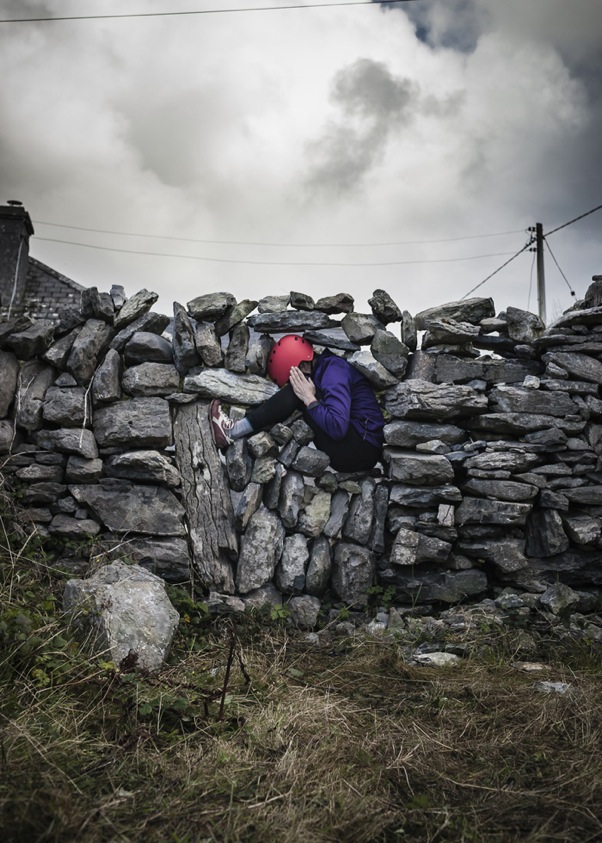
Untitled (Inis Oirr), Still from a performance with Ríonach Ní Neill, Photo, Matthew Thompson, 2013
Artist’s statement:
Michelle Browne looks to Kathleen Lynn's political ambitions as one of the first women to be elected to the Dáil, gaining a seat in the 1923 general election, although she did not take her seat. Following this she went on to be a councillor in Dublin Corporation. As part of the exhibition Outsider on the Inside Browne has interviewed a variety of women who are or have been involved in politics as public representatives to gain insight into their motivations for getting involved. Browne wishes to get a sense of the politicising moment for women that draws them into public life and their mentors or supporters on the way. As Lynn was also active in campaigning against article 41.2 in the constitution relating to women's position in the home, Browne also looks at the home as a site of political activity by highlighting any campaigning or activism that was undertaken from the home by women. The work is a non partisan look at women's engagement with politics which included contributions from Mary Robinson, Jan O'Sullivan, Jillian Van Turnhout, Liz O'Donnell, Liz McManus and many others to create a portrait of women's current involvement in politics.
-------------------------------------------------------------------------
Gary Coyle
Ballina Arts Centre
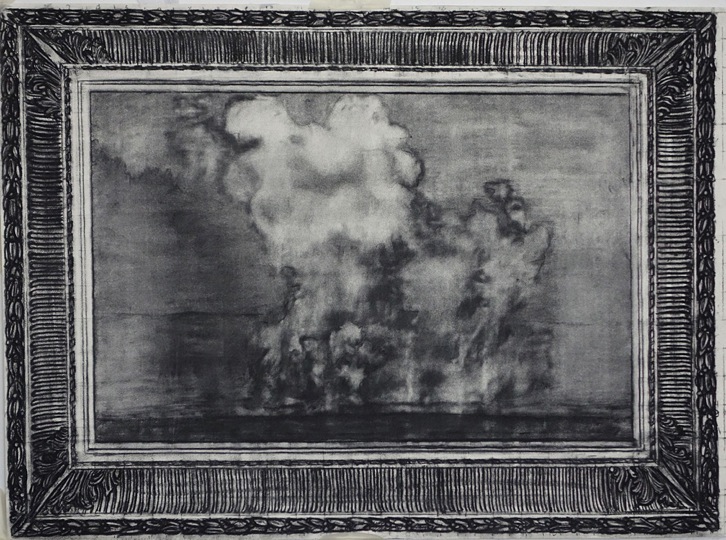
27/7/79 The Death of the Disco, 2015,
charcoal on paper, 102 x 142.
(Gary Coyle will make a new work for this exhibition)
Artist’s statement:
In the course of my research on Kathleen Lynn, I was struck by two things, The first being how little I, or for that matter anyone else, seemed to know about her, which is extraordinary in view of the remarkable life, or should that be lives, which she led. The other question I asked myself was would this obscurity have been the case if she were a man?
The only thing I did know of her, albeit tangentially, was ffrench- Mullen House, a block of flats on Charlemont Street, Dublin which I passed a thousand times, not realising that Kathleen Lynn had it built in the 1940’s under the auspices of St Ultan’s, the children’s hospital that she and Madeleine ffrench Mullen founded in 1919, realising that in order to break the cycle of poverty and Ill health, people needed decent accommodation. Nothing seems to have changed?
It is apposite that when I went to research ffrench- Mullen house, named after her life companion Madeleine ffrench Mullen & designed by Michael Scott, I discovered that it had been demolished by Dublin Corporation in 2014. All that remains on the site is a single tree, and it is this that is the subject of my drawing.
--------------------------------------------------------------
Patrick Graham
Ballina Arts Centre
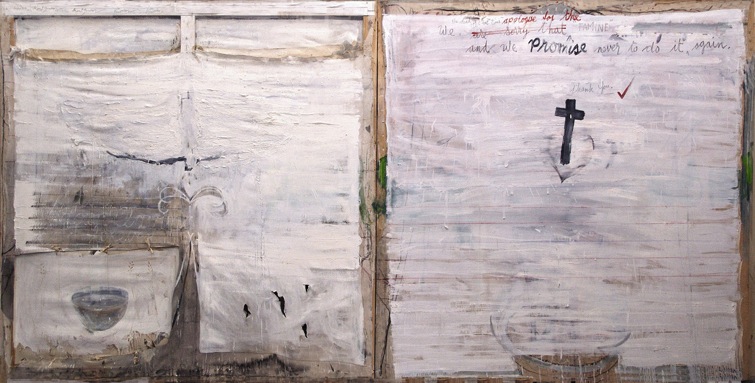
Famine (Mayo Series) 1995,
Oil and mixed media on canvas, 183 x 342 cm, diptych
Artist’s statement:
Art has the great potential for transcendence. It is about this wonderful experience that you get at 5 o’clock in the morning in Mayo – in a mist somewhere on the side of a hill – and you feel at one with the world and you are lifted up, and you in it and of it and at one, finally, and all that you are left with is memories, and that’s what you paint – memories of loss, - loss of a sense of being that you only meet once or twice in your life and see it in art. The Famine paintings came out of that and a sense that the landscape of Mayo carries those memories.
Painting is part of my homage to that essential need to make marks and to connect one mark to another, to watch it grow and then begin to think about it. The mark itself just generates itself – and it moves on from there, poetic notions of self and loss and all this and space – solitude, silence, distance and breathing between sounds.
---------------------------------------------------------------
Joanna Hopkins
Linenhall Arts Centre, Castlebar
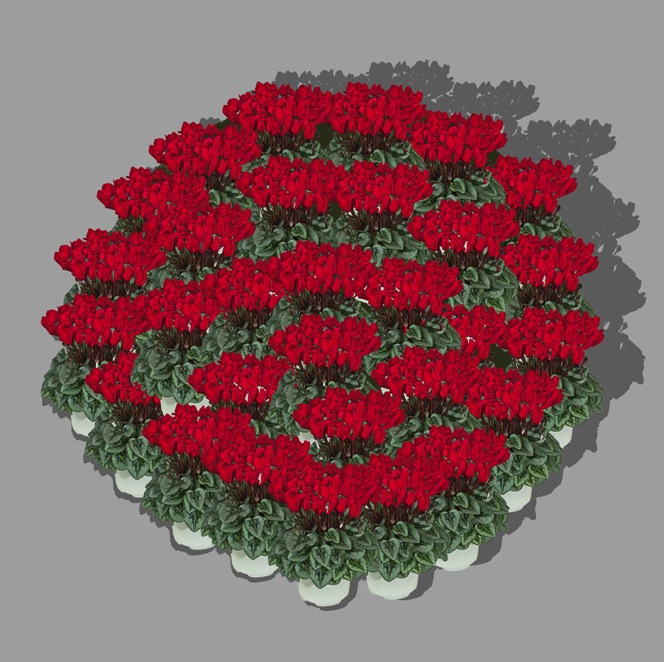
Name Day, 2016
Digital sketch of installation
5ft x 5ft, with 30 x pots of flowers
When we have great love shown to us,
We in turn are capable of showing love and empathy to others
Artist’s statement:
Name Day is a multimedia installation reflecting upon the diary entries of Kathleen Lynn over the course of her life. Revealed in her diaries is the gift of flowers, including cyclamens, azaleas, primulas and begonias, that Madeleine ffrench Mullen gifted her every 24th November, on Kathleen’s ‘Fete’ Day. This installation and accompanying drawings reflect upon the thirty years of her relationship with Madeleine.
Kathleen’s diaries reveal her great love of plants, flowers, gardening and the outdoors. The dried flowers, leaves and feathers found in the back of the diaries from 1921 to 1935 reflect a precious and contemplative way of maintaining memories and moments from her day, contrasting with her matter-of-fact writing in the diary entries.
The audience is welcome, on the last day of the exhibition, to take home a flower from the installation to gift to a loved one, or stranger, or plant in their own garden
--------------------------------------------------------------
Mary Kelly
Custom House Studios Westport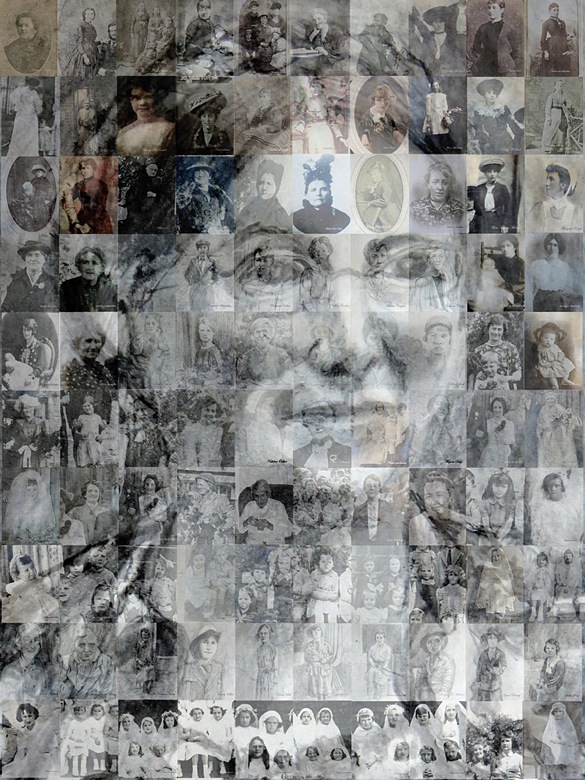
Matriline 2016
Photographic installation, dimensions variable
Artist’s statement:
Liz Gillis opens her introduction to Women of the Irish Revolution with the words of Myra Pollack Sadler “Each time a girl opens a book and reads a womanless history, she learns she is worth less”.
Kathleen Lynn, born in Mayo, was a pioneering paediatrician, active in the cause of suffrage, a staunch Republican involved in the 1916 Rising as Captain and Chief Medical Officer in James Connolly’s Irish Citizen Army, and politically prominent in national politics in the 20’s, especially in the areas of health and social change. As her biographer, Margaret Ó hÓgartaigh said, women like Lynn used their political experience and considerable energy to fight for the unheard voices in Irish history; children, the urban poor and women. Her life, the lives of many women in the story of the Irish Revolution and the lives of women in history generally have not received the acknowledgement and recognition they deserve.
I have asked both men and women for a photographic record from the female lines in their families taking the dates of Kathleen Lynn's life, 1874 to date. The historical visibility and record of women’s lives during this time is often erased, biased and sometimes airbrushed out altogether. The link with these women is here today with their children and children's children and we carry their story with us. We are here because of them and we continue their struggle for a democratic inclusive society.
I have also taken a sample of 50 women involved in the 1916 Rising and drawn representative portraits. The final project therefore is a drawing and photographic collage and a celebration of female representation.
-------------------------------------------------------------
Margo McNulty
Linenhall Arts Centre, Castlebar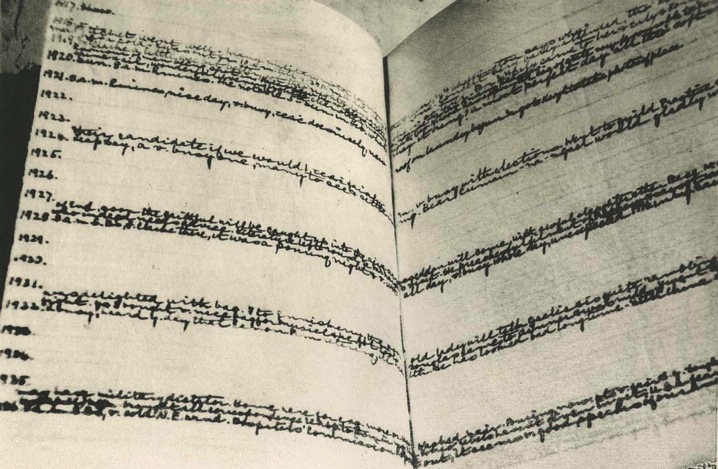
Diary
Kathleen Lynn, Print Suite 2016, 1 of 9 from
The Bodyguard of the Republic ed. of 4.,
Photo-etching on Zerkall paper, 15 x 20 cm.
Artist’s statement:
Margo McNulty’s new work Bodyguard of the Republic continues a thread within an already established practice. Much of her recent work deals with the foundation of the State. In her 2012 exhibition Reframe, the artist posited an alternative history of Micheal Collins’ assassination at Béal na Bláth. In her series Retrieve in the exhibition Fragments, Metaphors and Smithereens, (Graphic Studio, Dublin, 2016), she draws inspiration from objects crafted by her great-uncle, Eneas McNulty during his Civil War internment in the “Tintown” camp at the Curragh. In each of these bodies of work, McNulty mines the historical artefact in pursuit of the personal stories surrounding the larger political context. Her art rescues the overlooked incidental details and the timeless immutability of the historical object.
In Bodyguard of the Republic, McNulty continues with this thread to examine the museum and the archive itself as art object. The Museum becomes the receptacle for the trace of what is left of a life lived – in this case the life of Kathleen Lynn. An exploration of Dr Lynn’s archived belongings becomes a fulcrum for the words, handwriting and fingerprints of Sylvia Pankhurst, Michael Collins and Helena Molony. The traces of Lynn’s life that are contained within the context of the Museum and Archive manage to bind together the disparate influences that brought about the Rising; the labour, nationalist and feminist movements.
-------------------------------------------------------------
Janet Mullarney
Ballina Arts Centre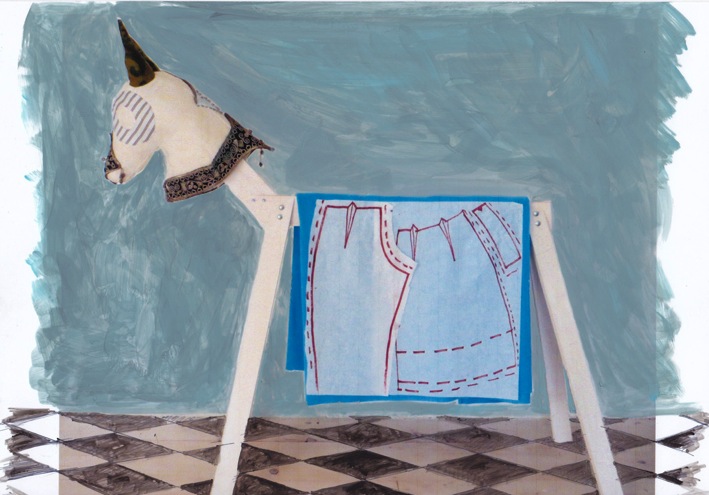
Concepts, crusades, clothing & clotheshorse, 2016,
Sketch for sculpture
Artist’s statement:
Concept (noun): Idea, belief, conviction, opinion, view, image, impression, picture
Crusade (noun): a crusade, a crusade to improve education
Crusade (verb):…you know how she likes crusading for the cause of the underdog
Campaign (verb): fight, do battle, battle, work, push, press, strive, effort, struggle, agitate, lobby; champion, promote, drive, push, move
Packhorse (noun): typically packhorses are used to cross difficult terrain
Clotheshorse (noun): a frame upon which clothes are hung
The horse, familiar in iconography from religious crusades, refers here to the origin of the word ‘clotheshorse’. The blinkers on the horse have as much to do with a focused vision, undistracted from the cause as to do with faith and belief in a mission, and determination in the face of adversity. The idea of the packhorse, crossing difficult terrrain, merges with a clothes horse, bearing its “pack” of progressive ideology. The paper pattern for trousers - the wearing of which challenged traditional gender norms and “provided a space where women actively contested and rethought femininity, advocating freedom of movement and equality with men” - overlap in the work with a skirt. Together they make up an image.
------------------------------------------------------------
Seamus Nolan
Áras Inis Gluaire, Belmullet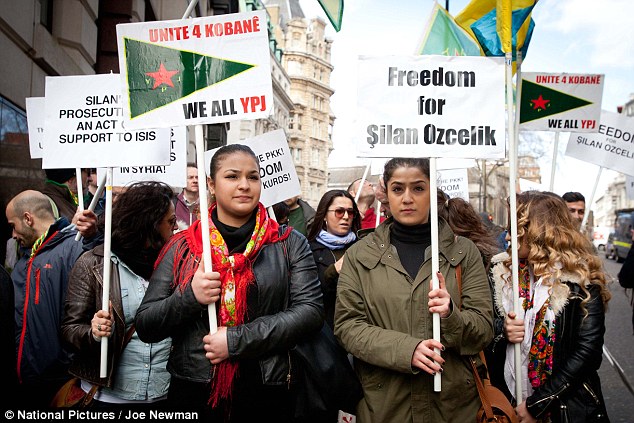
Free Silhan Özçelik 2016,
Installation and discussion,
Freedom for Silhan Ozcelik, Press photograph, Joe Newman.
Artist’s statement:
The project looks at the correlation between our 1916 centenary celebrations and the current struggles for independence in the Middle East. In Kurdistan the female militia, the YPJ, have emerged as a separate military organisation to defend the Kurdish people from ISIS, Turkish and Syrian state forces, defining a new autonomy for women in a highly patriarchal and tribal society.
Our state looks to its history in a commemorative manner as women such as Kathleen Lynn fought for independence yet current movements for independence, or even associations with these movements are outlawed. Silhan Özçelik 2016 a British citizen has been sentenced to 21 months in a young offenders’ institute for intending to join the PKK (the political wing of the YPJ) and fight against ISIS, although the only case against her seems to have been the video she made for her family describing her intention.
-------------------------------------------------------------
Conor O’Grady
Linenhall Arts Centre, Castlebar
Some Irish Mothers, 2016,
Video projection, floor installation, and public interventions in Castlebar, Dimensions variable
Artist’s statement:
Within my practice, there is an emphasis on the multiple, the participatory, large-scale floor installations and socially and politically motivated visual art practices. The work is heavily influenced by collaboration, dialogue and interconnectivity especially in relation to sub-groups and minorities within society. My practice is research based and is concerned with the visual language and technological structures which aid communication and the dissemination of ideas.
The hegemony of the gallery, the emergence of the urban/rural and the public/self-determined visual environment and the influence of mobile devices and Wi-Fi technologies, the production and consumption of visual culture, all play an important role in my work. Researching the cultural and political significance of Kathleen Lynn for this exhibition led to an investigation into the lives of Irish women before, during and after 1916, the lack of recognition given to the involvement of women during significant periods in Irish history, the influence of the Church and Marian Devotion on the personal freedoms of Irish women.
This work, however, focuses on the issues which affect women in contemporary Ireland, and questions the continuing imbalance in gender roles for men and women. Why, one hundred years since Kathleen Lynn took her place as Chief Medical Officer to the City Hall garrison, does a gender imbalance still exist, and why have we not achieved the equality proposed within our proclamation?
--------------------------------------------------------------
Will O’Kane
Ballina Arts Centre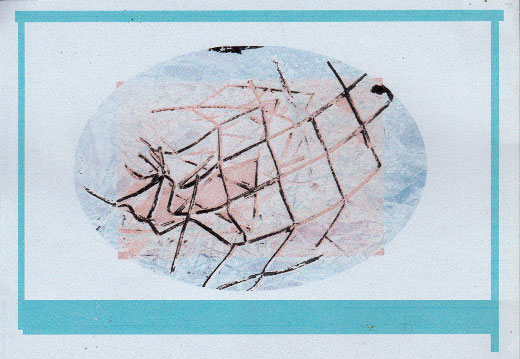
Broken Leadlights, Site Visit Mullafarry Church, Looped Printer/Scanner Analytical Image, Study for Painting ‘Broken Leadlights of Your Father’s Church’, 2016
Artist’s statement:
I painted my work on Plaster of Paris bandages, leaving an edge of plaster to install the works on to the gallery wall. Because of this, the works have become exhibition-specific. They can only be installed once, which to my mind gives the work an urgency. As the exhibition is historically-themed, I felt this would give the show one singular contemplative moment.
The plaster also operates as a direct allusion to Kathleen’s work as a doctor; Plaster of Paris having been a medical tool for setting breaks back into shape. When coupled with the painted subject matter they formed metaphorical representations. Plaster, then, becomes a metaphorical substance, in this instance representing her broken relationship with her father, or a way to make specific statements about Kathleen’s contribution to Irish medicine.
-------------------------------------------------------------
Deirdre O’Mahony
Ballina Arts Centre
What Would Kathleen Say? 2016
Series of posters;
Digital prints on paper. Each one; 33.1” x 46.8”
Artist’s statement:
What would Kathleen Lynn say to the HSE and the Department of Health today? The Easter Rising proclamation promised equal rights and equal opportunities to all its citizens. The commemoration in 2016 provides an opportunity to review the state of the Irish health service and the effect of the post-2008 cuts, particularly in rural areas. At public meetings across the West of Ireland, the future of the rural GP service has come under scrutiny. People are concerned and angry at the effects of the cuts and the sustainability of rural communities, particularly given an ageing population with complex healthcare needs. A campaign, No Doctor No Village, is underway and two GPs are candidates in Mayo and Clare in the General Election.
Deirdre O'Mahony has channelled Kathleen Lynn's voice through Facebook and Twitter asking What Would Kathleen Say? to this present crisis. Her commentary provides the content for large texts and image poster prints and a lens through which to reflect on issues such as the social and economic effects of the loss of rural GP services; the implication for ageing rural populations and the violence suffered by women and children through the actions or inactions of the state healthcare system.
---------------------------------------------------------------
Geraldine O’Reilly
Linenhall Arts Centre, Castlebar
Mullaghfarry, Home of Kathleen Lynn
Conte, charcoal and graphite on Indian paper, 76 x 56 cm
Artist’s statement:
Dr. Kathleen Lynn is well known as a rebel due to her involvement in 1916 Rising but I believe she should be better known for her pioneering work on behalf of the poor of Dublin.
In one of the drawings I reproduced the image of Kathleen Lynn holding four malnourished children. It was in response to the neglect of the poor that Kathleen Lynn set up St Ultan’s Infant Hospital in 1919 with Madeleine ffrench Mullen. Dublin had one of the highest mortality rates for children in the world. The hospital was a response to medico/social conditions in Dublin. It was the first female-run hospital in the country and it provided opportunities for female doctors to practise against a backdrop of discrimination against women practitioners in other hospitals.
Lynn was also a pragmatic socialist and republican. In a second drawing I hoped to illustrate that pragmatism by reference to her accepting a goat donated by Lady Carson (wife of Unionist Edward Carson) to the hospital. She named the goat Carson, and accepted a cot donated by the family of executed republican Rory O’Connor provided it was named after him.
In another drawing I refer to her origins in County Mayo. The drawing Mullaghfarry – birthplace of Kathleen Lynn shows nature encroaching on the house she was born in, the house symbolising for me the decline of a whole social order. The social conservatism and the lack of pluralism in the Irish Free State must have been seen as a betrayal of the work of revolutionaries like Kathleen Lynn.
----------------------------------------------------------------------------
Dermot Seymour
Linenhall Arts Centre, Castlebar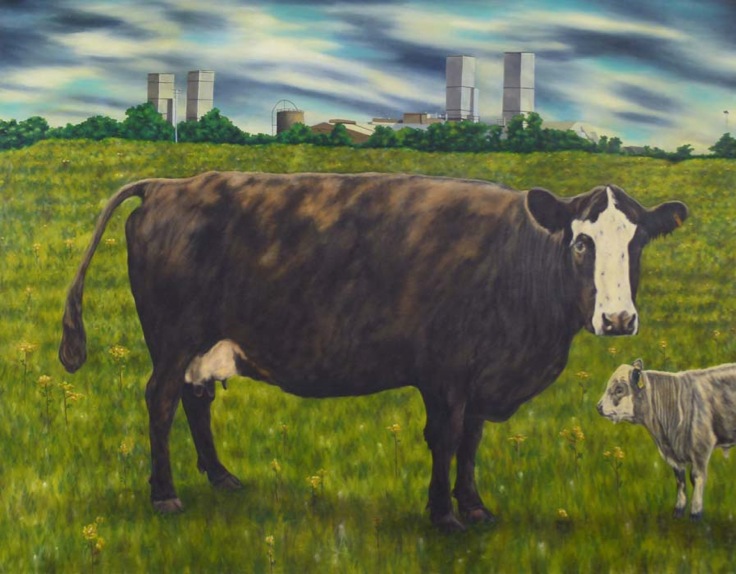
Asahi Epitaph. 2016
Oil on canvas, 143 x112 cm
Artist’s statement:
Kathleen Lynn, medical doctor, was born in Mullaghfarry, Killala, County Mayo. This is her ancestral land, where, in 1974 the Asahi Chemical Plant was built to manufacture acrylic fibre from acrylonitrite. Asahi closed in 1997, leaving an environmental time bomb that leaches poisonous toxins into the surroundings of Lynn’s birthplace. A proposal to handle asbestos waste was withdrawn in 2005 and today the plant is a biomass power station.